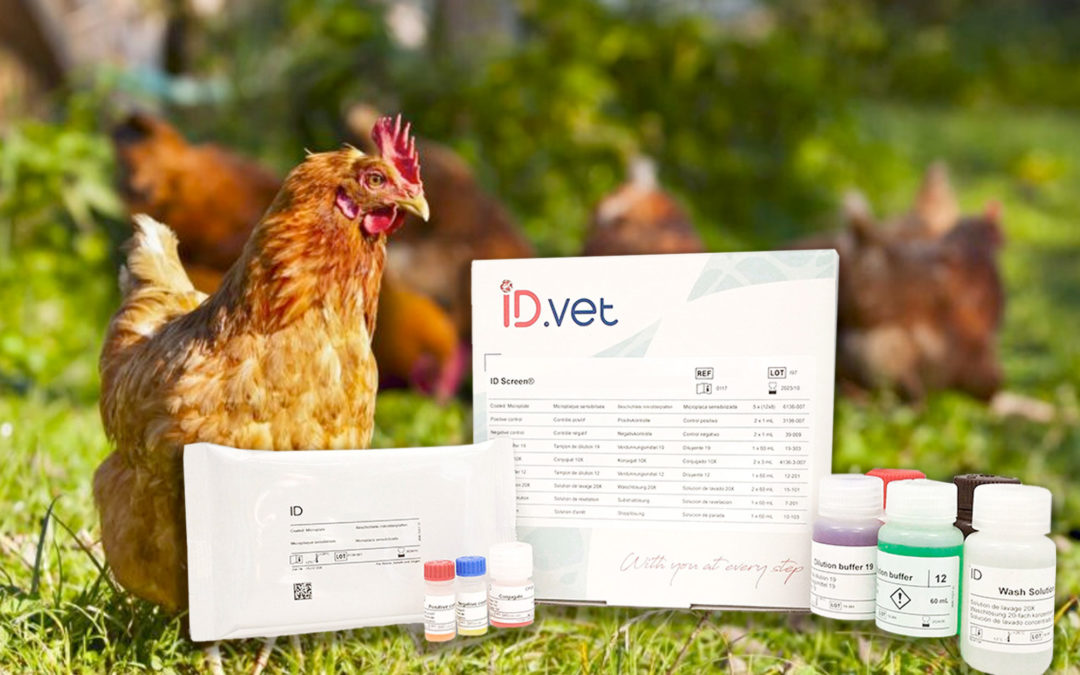ID Screen® Influenza A Antigen Capture, is the new multispecies ELISA test for the detection of the outbreak of avian influenza A in bronchopneumonal fluids of multiple species; including horses, pigs, birds or in swabs or avian feces.
Influenzaviruses A, B, and C, from the Orthomyxoviridae family, are responsible for influenza-like illnesses that affect humans and certain animals. Viral type A, B, or C is defined by the nature of the internal nucleocapsid antigen. Type A is the most conserved genus and affects both humans and avian, porcine and equine species.
Type A influenza viruses are further divided into subtypes based on their hemagglutinin (H) and neuraminidase (N) antigens. Fifteen H antigens (H1 to H15) and nine N antigens (N1 to N9) have been isolated. The H5 and H7 subtypes are associated with highly pathogenic forms of the disease.
Influenza A strains are responsible for Avian Influenza A (AI), which affects domestic and wild birds and in which infection can be asymptomatic or rapidly fatal. Viruses of avian origin can eventually infect other mammalian species (pigs, humans) but are poorly adapted to multiply in humans, where infection is rare. The risk of a human pandemic stems from the possibility of the avian strain reassorting with a human strain and being able to spread in the human population. Currently, the rapid spread of Highly Pathogenic Avian Influenza A H5N1 across East Asia and Europe has alarmed international health organizations, and efforts are underway to contain its spread.
Given the need for fast and reliable methods for detecting the Influenza A virus in different animal species, IDvet has developed the ID Screen® Influenza Antigen Capture kit, a rapid ELISA test designed to detect the A antigen of the Influenza virus in pigs. , horses or birds.
The ELISA ID Screen® Influenza A Antigen Capture kit can be an effective tool for the rapid detection of the Influenza A virus in bronchio-pnemonial fluids of different animal species. It is particularly well suited for rapid and cost-effective analysis of many samples.
This kit presents very good features for the capture of the Influenza A antigen: high sensitivity, high specificity and high species specificity for Influenza A. With this kit it is possible to work on complex matrices (faeces, swabs, tissues) that, with Immunochromatographic methods often give results that are difficult to interpret.
Test principle
The ID Screen ® Influenza A Antigen Capture Kit can be used with bronchial-pulmonary fluids from pigs, horses, or birds, or with cloacal swabs from birds or bird feces. The kit contains 2 or 5 plates and all the necessary reagents for the analysis of 192 samples or 480 samples.
The wells are supplied sensitized with a monoclonal antibody (Mab) anti-Antigen A.
- The samples are added to the wells. Antigen A (Ag A), if present, forms an antigen-antibody complex with the Mab.
- An anti-Antigen A peroxidase (HRP) conjugate is added to the microwells. It binds to the A antigen, forming an antibody-antigen-HRP-conjugate complex. After washing to remove excess conjugate, Disclosure Solution (TMB) is added.
- The resulting coloration depends on the amount of Antigen A present in the sample to be analysed:
- In the presence of Antigen A, a blue coloration appears, which turns yellow after the addition of the Stop Solution. In the absence of Antigen A, no staining appears.
- The microplate is read spectrophotometrically at 450 nm.
The cut-off point is set at 4 times the D.O. mean of negative controls (OD NC): Cut-off = 4 X mean OD NC Samples with D.O.:
less than or equal to the cut-off point are considered negative.
higher than the cut-off value are considered positive.

